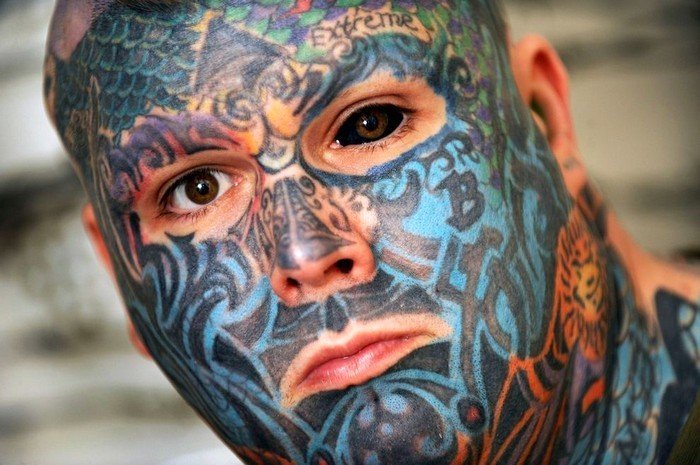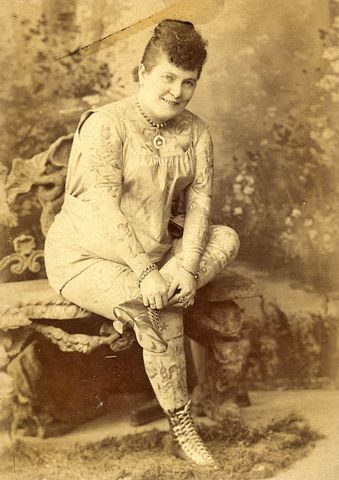- Москва, ул.Лётчика Грицевца 14а,
м. «Пыхтино» - Ежедневно, с 1200 до 2000
- +7 (915) 000-77-99 - (Телефон салона) +7 (915) 000−77−99 - (WhatsApp)+7 (915) 000−77−99 - (Viber)
- domtattoo@yandex.ru
The History oj Contemporary Western Tattooing
Все о татуировках
- Стили татуировки
- Белая татуировка
- Биомеханика (Biomechanics) и Органика
- Блэкворк ( Blackwork)
- Дотворк (Dotwork)
- Готика «Gothic»
- Кельтские
- Клокворк
- Нью Скул ( New School)
- Олд Скул ( Old School)
- Ориентал (Oriental)
- Полинезия
- Реализм
- Стимпанк
- Сюрреализм (Сверхреализм)
- Трайбл (Tribal)
- Треш полька
- Черно-серая "Black&grey"
- Чикано (Chicano)
- Этнический стиль тату (Ethnic)
- Японские тату
- Тотемные тату Тлинкитов
- Татуировки- надписи
- Временная татуировка.
- Хоррор
- Парные тату
- Крестиком
- Кружева
- Ультрафиолетовая татуировка
- Татуировки на частях тела
- Надписи для тату с переводом
- Надписи с переводом с немецкого на русский язык
- Надписи, афоризмы, цитаты на португальском и бразильском языке с переводом на русский
- Надписи на испанском с переводом
- Перевод фраз и гимнов (стихов) с хинди на русский
- Фразы, надписи и афоризмы на арабском языке с переводом
- Надписи для мужчин
- Надписи для мужчин с переводом
- Благородный муж
- Друзья и дружба - мысли великих.
- Труды, достижения и ошибки - надписи для тату
- Враги и недруги, война и кровь в надписях для мужчин
- Надписи о Смелости и Силе для мужских тату с переводом
- 120 надписей для Мужчин о Смелости, Силе и Движении Вперед
- Тату надписи для Мужчин-воинов и защитников Отечества на тему Смелости, Чести, Мужества, Долга и Действия
- Надписи для девушек
- Надписи на тему: Любви, Семьи и Верности с переводом на Английский
- Надписи с переводом о семье на разные азыки мира.
- Вопросы о татуировках
- Астрология и астральная геометрия
- Значение тату
- Уход за татуировкой
- Для СМИ и видео проектов
- Татуировка на шрамах
- Иглы и краски для татуировок
- Зодиакальные татуировки...
- Стили, виды татуировки. Сведение тату.
- English language
- Все о Сак Янт - Тайской Шаманской Татуировки
- Священные татуировки - ИЗ ПРОШЛОГО
- МАГИЧЕСКИЕ ЧЕРНИЛА: ЗАКЛИНАНИЯ И СИГИЛЫ
- ИГЛОЙ НА КОЖЕ
- ЛУК СИТ
- КХРУ САК
- ВИЧА
- ТЕКСТЫ И ЧИСЛА, ТЕЛЕСНЫЙ ЩИТ
- ЯНТРЫ ЧОК ЛАП ПРИНОСЯТ УДАЧУ И ПРОЦВЕТАНИЕ.
- ТРАНС
- ТРАДИЦИИ САК ЯНТ В ТАИЛАНДЕ
- ЗАКЛИНАНИЯ И ПИСЬМЕНА
- Обучение мастеров-татуировки в Тайланде (ТРАНСФОРМАЦИЯ И ДИСЦИПЛИНА)
- Сигилизм
Информация
- Портфолио
- Все о пирсинге
- Виды и стили
- Подготовка и процедура пирсинга
- Когда пирсинг уже сделан
- Бод Мод
- Украшение для пирсинга
- Инструмент для пирсинга
- Словарь терминов
- Cтоимость пирсинга
- Магическое, символическое значение пирсинга
- Вопросы и ответы про пирсинг
- Удаление татуировок
- Все о татуаже
- Новости
- Ответы на часто задаваемые вопросы о тату.
- Работы тату художника Yann Travaille
- Съемки MTV
- Проба пера
- Съемки Дискавери в судии ...
- Энциклопедия пирсинга
- 7 Московская Международная Тату Конвенция
- «Звёздный» гость салона «Дом Элит Тату» - известный продюсер Андрей Клюкин
- Ушел из жизни тату мастер Илья Смирнов
- Мы примим участие в Питерской тату конвенции 2015 года
- У нас делают татуировки модели Creepy Sweets
- Оригинальный майки и футболки с аэрографией за 4.000 рублей
- Мы получили независимую премию "Лучший Тату Салон 2015 года" по версии портала Татуировка.Рф
- Мы участники и победители тату конвенции в Москве
- Мы организаторы "Ночи Татуировщика 2015 в Москве"
- Rock heroes: Miss Тату Хабаровск
- Немецкий политик сядет в тюрьму за то что сделал нацистскую татуировку
- Международная Московская Тату Конвенция 2016
- Санкт-Петербургский Тату-Фестиваль
- 2 Международный фестиваль татуировки Сочи 2016
- Самый старый татуированный человек на нашей планете.
- 9-я Международная Московская Тату Конвенция 2017
- Тату мастер с 1.4 миллионом подписчиков маскирует растяжки
- Miss Tattoo Australia Дженн Десмонд - водитель грузовика
- Тату разрешены
- Зейн Малик сделал татуировку с глазами Джиджи Хадид на груди
- Тату как запрет на реанимацию
- В честь ЛДПР прошла тату-вечеринка
- Тату салон в Самаре
- Аренда места в тату салоне Москва. Как правильно и главное где арендава
- Обучение и все о нем
The ancient tribal groups inhabiting the British Isles practiced extensive tattооing. The Picts were named for the iron implements they used to create tattoo designs; the term «Briton» is derived from a Breton word meaning «painted in various colors». Briton males were heavily decorated with animal designs intended to enhance their fearsome appearance. In his memoirs Julius Caesar noted that the Britons were colored blue and carried designs that made them «frightful to look upon in battle»

This contact with invading Roman legions resulted in the adoption of
tattooing by the occupying Roman soldiers. The practice became popular and
continued to spread within the military until it was banned in the third
century by the Christian Emperor Constantine who maintained that it violated
God's handiwork. Centuries later
FolloWing the Battle of Hastings, King Harold's mutilated body was identifiable only because he had «Edith» tattooed over his heart. From the eighth through the tenth centuries, western tattooing was again banned by the Church as a form of deviltry and because it disfigured the body created in God's image. During the campaigns to wrest control of the Holy Land from the Muslims, tattooing again became a frequent practice as crusaders had themselves marked with thecrucifix or other religious images to insure a Christian burial should they die in a foreign land. Until the eighteenth century this form of religious tattooing was the only significant practice responsible for retaining tattooing within western culture. Tattooists in Jerusalem did a lively business among pilgrims who received religious images commemorating their journey and indicating their devotion to God. This practice continues to this day. The modern history of westernlEuropean tattooing begins with the exploratory voyages of Captain James Cook and his encounters with tribal tattooing in the South Pacific. In July of 1769
Cook noted in the ship's journal:
Men and women [of Tahiti) paint their bodies. In their
language. this is known
 Prior to this encounter with tattooing. the practice was called
«pricking» in the west. Cook introduced the Tahitian
Prior to this encounter with tattooing. the practice was called
«pricking» in the west. Cook introduced the Tahitian
Officers and sailors of the Endeavor received tattoos from Tahitian artisans to commemorate their adventures and. on his second voyage to the Pacific. Captain Cook returned to England witha heavily tattooed Tahitian prince named Omai who was exhibited as an object of great curiosity to members of the British upper class. Omai was one of the first of a series of tattooed people on display in western aristocratic circles at the end of the eighteenth century. The first tattooed European to be publicly exhibited was Jean Baptist Cabri, a French sailor who had jumped ship in the Marquesas in 1795 and was, according to his account, adopted by a tribe and tattooed on the face and body as a mark of honor. A few years later an Englishman named John Rutherford returned from a voyage to New Zealand. He told of being captured by the Maoris, forcibly tattooed, and compelled to marry a chieftain's daughter. After five years Rutherford escaped and returned to London where, in the early nineteenth century. he became the object of great public interest.
By the 1850s a number of heavily tattooed Europeans were making
a liVing by exhibiting themselves to the public and to meetings of prestigious
medical associations. Their often fanciful
The most popular designs were South Sea and nautical images,
identification marks (especially military and craft guild insignia). religious
tattoos, marks of political allegiance, and love vows. It was the tattooing of
the nobility, who commonly were tattooed in the course of travels in the
orient. that drew the most public attention. Led by the London World.
newspapers of the day carried lurid accounts of aristocrats' tattoo
experiences. Among the famous tattooed personages were Czar Nicholas II of
Russia, King George of Greece. King Oscar of Sweden. Kaiser Wilhelm of Germany.
and most of the male members of the British royal familySoon the tattoo rage
made its way across the Atlantic and began to affect the rich and powerful in
America.
The first professional tattooist to practice in the United
States was Martin Hildebrand. He claimed to have «marked thousands of soldiers
and sailors» while travell1ng among both the Confederate and Union forces
during the Civil war. By the 1890s Hildebrand had opened an atelier on Oak
Street in New York and was continuing to ply his trade. Other
Samuel O'Re1lly's place in tattoo history was assured by the major part he played in the development of the electric tattoo machine. This technological innovation was significant because it increased the rate at which tattooing diffused in the SOCiety. Tattooing with the electric machine subjected the customer to less pain and necessitated far less skill and experience on the part of the tattooist. Consequently, the number of tattoo practitioners and clients increased dramatically during this period.
In 1876 Thomas Alva Edison patented an electric stencil pen device for making punctures on paper patterns used in sign painting and embroidery. Fifteen years later O'Reilly received the first American patent for an electromagnetic tattoo machine (which he called the «tattaugraph») which was, with only minor modifications, adapted from the Edison design. In 1904 Charlie Wagner was awarded a patent for a significantly improved tattoo machine with two electromagnetic coils set transversely to the tube and needle assembly rather than the rotating coil design of the O'Reilly instrument.
O'Reilly's colleague Lew Alberts, who was originally a
wallpaper designer, became a prolific creator of tattoo patterns. His work is
of particular importance to the course of western tattooing because he
reproduced sheets of his designs and sold them to fellow tattooists. A large
percentage of the highly conventionalized tattoo designs found on the wall
«flash» of contemporary tattoo shops originated in the design charts created
Prompted by the overt distaste expressed by members of the
American elite. media stories of venereal diseases contracted in unhygenic
tattoo establishments. and the increased popularity of tattooing within
socially marginal subcultures. tattooing fell into disrepute in the United
States by the 1920s. Additionally. it came to be seen as a deviant practice
because heavily tattooed men and women were commonly exhibited as curiosities
in circuses and sideshows. P. T. Barnam displayed tattooed dwarfs. tattooed
wrestlers. tattooed ladies. and entire tattooed families (most notably Frank
and Annie Howard). The Depression spurred this definition of the
.jpg)





